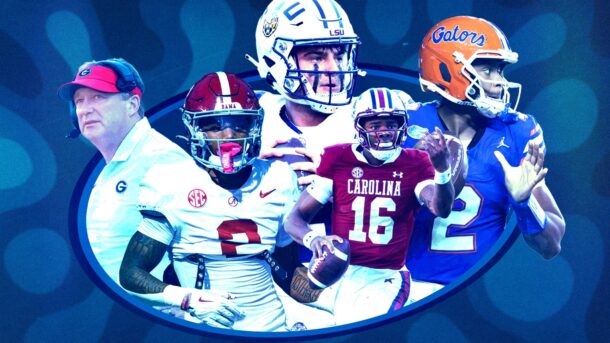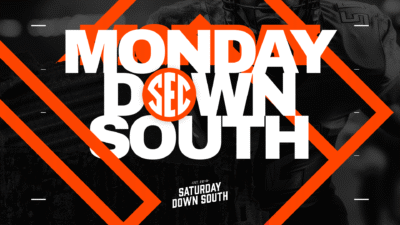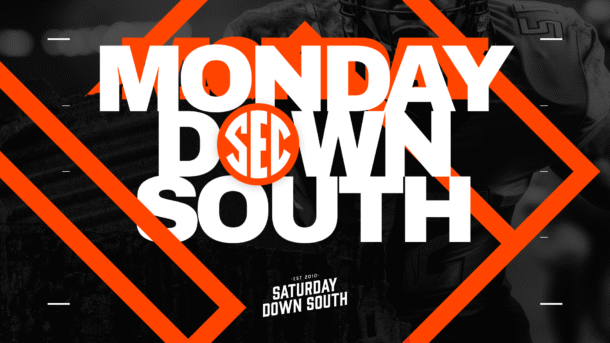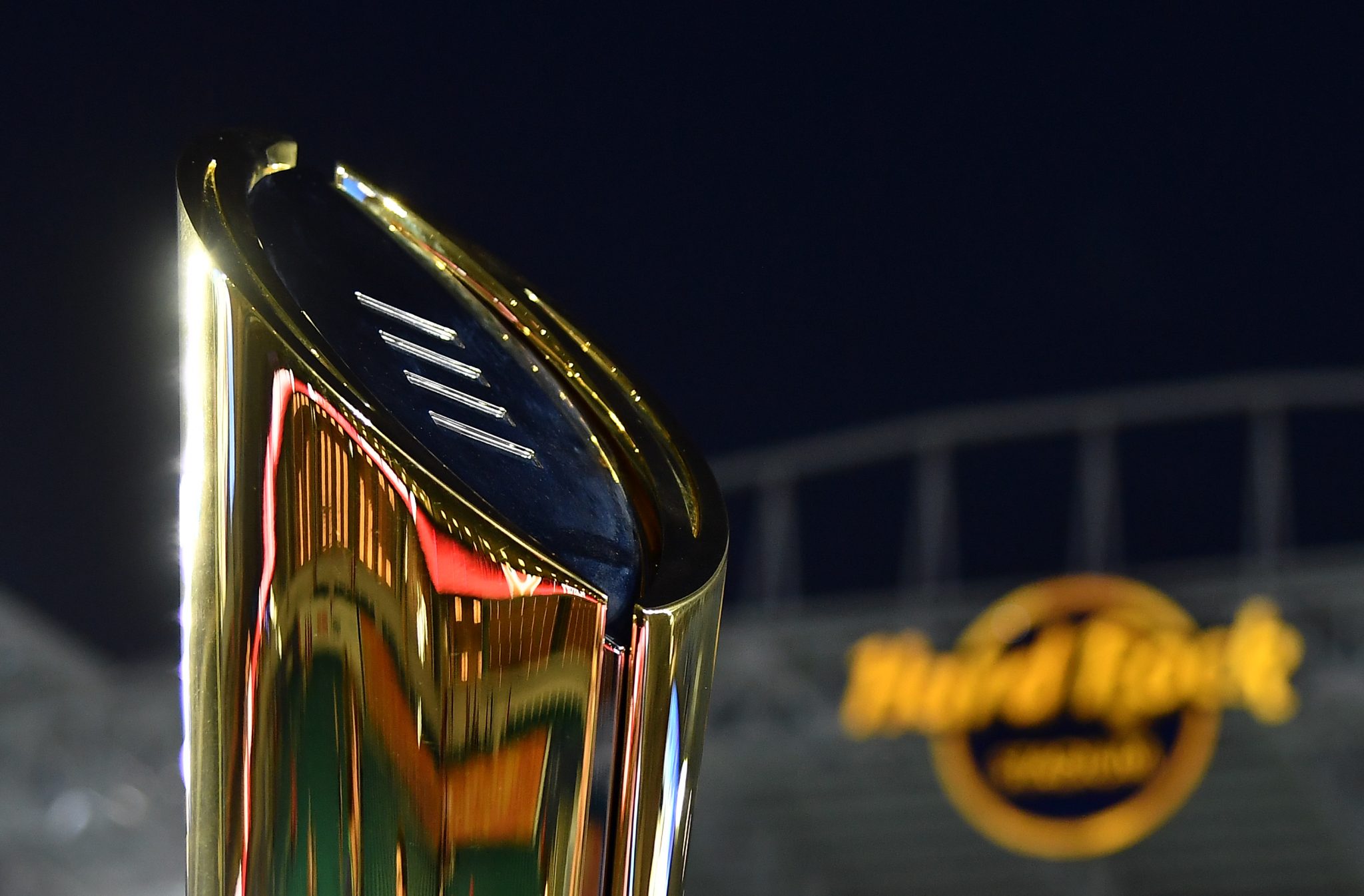
An appreciation of Marcel Reed and the player I wasn’t sure that he’d become
I stand by the rebuttal.
At the start of fall camp, Texas A&M posted a slow-motion video on Twitter of Marcel Reed making an on-target downfield throw that was captioned “wait, we thought @Marcel10Reed wasn’t a passer?” I objected. Yes, we are allowed to question Reed as a passer, I wrote. Despite what that video of Reed throwing in shorts without a pass rush told us, ranking No. 15 in the SEC in adjusted downfield completion percentage in 2024 was an area of concern, as was his 4.4 yards/attempt when pressured (2nd worst in the SEC), which also saw him scramble an alarming 25% of the time in those spots.
My rebuttal wasn’t meant to argue the point “I’m out on Marcel Reed.” In that August column, I outlined why he could indeed take another step in Year 2 of Collin Klein’s system, and that the additions of KC Concepcion and Mario Craver could open up a passing game that felt limited throughout a herky-jerky offensive season in Mike Elko‘s Year 1, wherein Reed and Conner Weigman had a tug-of-war for QB1 status. The rebuttal was that there was real data that suggested Reed had strides to be made, and that putting out a social media clip that scoffed at those aforementioned areas of concern felt misguided.
Three months later, the only misguided take that one can have about Reed is that he can’t pass.
Reed isn’t a perfect player, though he led a perfect A&M start that moved past the “8-4” jokes in historic fashion. Spend any time watching A&M’s QB1 and you’ll see that the Year 2 progression is there. The pocket presence, the command, the understanding of the offense, the trusting of the scheme, etc. It’s all been on display. One can scoff at any notion that A&M is winning games despite Reed. The Aggies are 9-0 with their best regular season win total since Johnny Manziel’s Heisman Trophy year in large part because of Reed.
Don’t get it twisted. We’re not doing a Manziel-Reed side-by-side comp, nor are we ignoring the fact that any quarterback who has the same starting 5 offensive linemen all season — A&M is the only SEC team who can say that — is going to be set up for success.
But let’s go back to those aforementioned question marks entering 2025
As in, the downfield accuracy, the throws under pressure, the over-reliance on scrambles, etc.
The downfield accuracy isn’t at Julian Sayin or Joey Aguilar levels. In fact, Reed’s adjusted completion percentage on throws 20 yards beyond the line of scrimmage is still near the bottom of the SEC at 38.5%, but that’s still a nice improvement from 27.8% in 2024.
What’s interesting is that if you take away the air yards element and just focus on passes that have gained 20 yards, Reed is No. 5 in the SEC with 35 such completions, which is just 3 fewer than SEC leader Trinidad Chambliss (it’s also 10 more than Reed had all of last season). Why is there such a discrepancy? Craver and Concepcion. By adding 2 guys who can make people miss in space, Reed’s downfield accuracy isn’t as magnified. With players like that, it’s all about being accurate enough for them to gain yards after the catch (YAC). A&M is the only SEC team with 2 players with at least 300 YAC yards, and Craver leads the SEC with 496 YAC yards. In fact, Louisville and Nebraska are the only other Power Conference teams who can claim that feat.
Sure, scheme helps with that. It also helps that Reed has a 70% adjusted completion percentage on intermediate throws (10-19 yards) after he was 60% in that area of the field last year. That’s good for No. 5 in the SEC. Even better, his 138.3 NFL QB rating on those throws is No. 1 in the SEC and No. 3 among Power Conference quarterbacks.
Again, this is what a Year 2 progression looks like:
A Year 2 progression also looks like someone who has trust in the scheme. That means not defaulting to his legs when pressure hits, just like Reed did on that touchdown to Concepcion.
A&M’s offensive line continuity has shown up in the form of a 23.8% pressure rate on Reed’s drop-backs, which is the second-lowest rate among starting SEC quarterbacks. But remember how Reed scrambled on 25% of the drop-backs when he was pressured last year? This year, that number is down to 15.9%. That’s been evident in key spots.
That first score of the game against Mizzou came on 3rd-and-goal when Reed faced front-side pressure from one of the SEC’s top pass-rushers, Zion Young, and he made an on-target throw going to his left to his No. 3 receiver.
A casual fan might look at some of the plays that Reed is making and suggest that he’s simply benefitting from those surroundings. Take that screen pass to Concepcion against Mizzou. A bubble screen wherein Concepcion followed some excellent blocking en route for 6 won’t show up on any QB highlight reel, but that only happened because Reed recognized the blitz pre-snap on 3rd-and-6, so he audibled into that quick-hitting play.
Perfect. That wins games.
That pre-snap recognition got a nice stamp of approval from Elko.
“When we talked in the offseason about him learning what it takes to be an SEC quarterback, all of that stuff goes into it… credit to him for everything that he put in this offseason elevate his game to be able to do things like that,” Elko said on Saturday (H/T Tony Catalina).
To recap, Elko admitted they had conversations in the offseason about what it takes to be a QB1 in the SEC, which further confirms that even his own head coach knew he had some key areas to improve.
Is Reed now elite among SEC quarterbacks when facing pressure? Hardly. He’s a 52.3% adjusted passer under pressure, which is No. 15 in the SEC. But how can you overcome that in those spots? Don’t throw interceptions (he has 0 under pressure), avoid sacks so that your offense doesn’t get behind the sticks (his 8.7% pressure-to-sack rate is easily the best in the SEC) and make clutch throws (his 5 TD passes under pressure rank No. 2 in the SEC).
That’s the beauty of what Reed’s game has become
Everything in this offense has to be respected. The second you forget about Reed as a runner, he can hit 20.3 MPH and take it to the house with his legs.
That 41-yard touchdown run was a big chunk of the career-high 67 scramble yards that Reed had in Brian Kelly‘s final game at LSU. Mind you, that came on a night in which Reed also tied his career high with 9 designed runs, which fueled his career-high 108 rushing yards in one of the most hostile atmospheres in the sport.
What Reed has shown not only in that LSU game, but this year as a whole, is that he’s extremely comfortable playing with a lead. Of equal importance, he’s extremely comfortable throwing with a lead. With a lead of 1-7 points, Reed leads all FBS QBs with 34 first downs as a passer (he had 14 last year), and Ty Simpson is the only FBS quarterback with more passing plays of 15 yards in those spots.
But unlike Alabama, who has yet to run for 4.0 yards per carry against Power Conference competition, A&M can pair those chunk yardage plays in the passing game with a rushing attack that averages 205 yards per contest. Shoot, the Aggies had 220 rushing yards in the second half alone on Saturday against a top-15 Mizzou run defense.
That’s how you become a difficult offense to contain, which perhaps explains why it only fell behind by 8 points once this season (at Notre Dame). So far, Auburn is the only team who held the Aggies to less than 31 points. Including Notre Dame, the Reed-led A&M offense is averaging 36.3 points per game against Power Conference competition. Take away non-offensive scores — Tennessee had 4 of those vs. Power Conference competition — and that’s the best mark in the SEC. Even Indiana, who has the No. 1 scoring offense in America, is averaging 38.3 points per Power Conference game if you take away the non-offensive scores.
That side-by-side résumé with fellow unbeaten Indiana isn’t going anywhere, and likely, neither is the Fernando Mendoza-to-Marcel Reed Heisman Trophy comparison. Reed has earned the right to be on the short list (+750 on BetMGM) with Mendoza. Time will tell if he can become the first A&M player to reach New York since Manziel. Reed already became the first A&M quarterback to lead a 9-win regular season since Manziel’s Heisman season in 2012.
Unlike that magical 2012 season in College Station, though, Reed still has everything in front of him as mid-November nears. First on that list would be doing something that neither Manziel nor any 21st century A&M quarterback got to do. That is, play in a conference championship. It could all come down to a revenge game against Texas in Austin.
Either way, Reed and the Aggies are a virtual lock to make the Playoff (good luck finding odds anywhere on them to earn a bid). They joined 2020 Alabama, 2021 Georgia, 2022 Georgia and 2023 Georgia as the only SEC teams in the 2020s to start 9-0. Three of those teams won a national title, and all 4 of them finished in the top 3 of the AP Poll. A&M hasn’t done either of those things since 1939. Reed’s passing improvement is a major reason why that’s all on the table.
No rebuttal necessary.
Connor O'Gara is the senior national columnist for Saturday Down South. He's a member of the Football Writers Association of America. After spending his entire life living in B1G country, he moved to the South in 2015.





